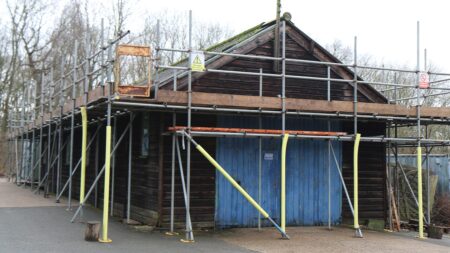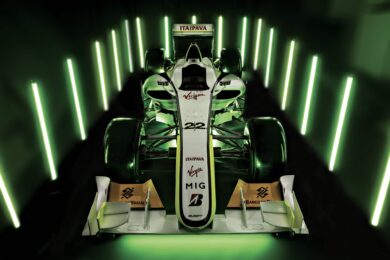The tragic death of François Cevert and Stewart’s retirement at the end of 1973 marked the end of Tyrrell’s golden era.
However, Tyrrell’s legacy extended beyond victories as the team became a haven for innovation that reached its peak in 1976, when Tyrrell presented the P34 – the first and only six-wheeled car to race in F1.
Though it only won a single grand prix, the P34 became an icon and remains a huge part of F1 folklore.
As Formula 1 moved into the turbocharged 1980s and then into the manufacturer-dominated 1990s, Tyrrell was increasingly exposed by financial realities, even though it had moved out of the old shed and into a factory constructed next door.

The P34, the only six-wheeler to race in F1
Getty Images
By the mid-1990s, it was clear the independent team was struggling to survive in an era that was becoming increasingly corporate.
In 1997, after nearly three decades at the helm, Ken Tyrrell sold the team to British American Tobacco.
The Tyrrell name would appear on the grid for one final season in 1998 — under new management — before disappearing altogether.
BAR (1999–2005): Unfulfilled promises

BAR’s debut went as well as this image suggests
Grand Prix Photo
When British American Tobacco (BAT) acquired the Tyrrell team in 1997, out went the blue-collar pragmatism of Ken Tyrrell, and in came aggressive marketing, big budgets, and even bigger promises.
The new entity made its debut in 1999 as British American Racing (BAR), based in a new state-of-the-art facility in Brackley — the same town that today houses Mercedes.
BAR made headlines before ever turning a wheel, promising to fight for wins in its debut season. The driver line-up was headlined by 1997 world champion Jacques Villeneuve, lured away from Williams by his long-time manager Craig Pollock.








